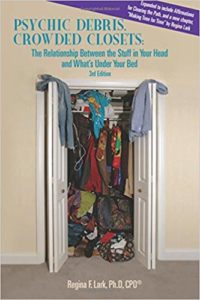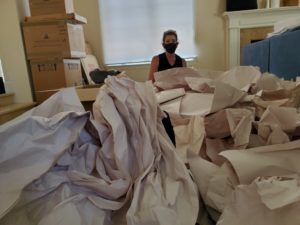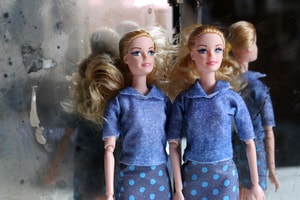
Image via Unsplash
Whether you’re looking for a safer way to sell your home during the coronavirus pandemic, selling property from out of state, or selling a vacant home, virtual staging can help you show off your home’s best side. Not only that, but virtual staging can be much more affordable than traditional home staging. Want to learn more? Read on to learn all about virtually staging your home to sell.
How Virtual Staging Works
Virtual staging eliminates the need for expensive rental furniture by using digital applications to insert furniture, artwork, and other staging elements into real estate photographs. Virtual staging apps let agents choose from a gallery of furniture and décor options in order to decorate a home to appeal to a specific set of buyers.
While virtual staging is simpler and cheaper than traditional home staging, it’s not a DIY solution. Designing a space that appeals to buyers takes skill. That’s why agents use apps and software that let them upload photos and receive professionally staged rooms in return. Luckily, the costs are much lower than traditional home staging: Even the most high-end staging apps are only around $120 per photo.
Virtual Staging and Your Selling Strategy
Staging is just one part of your home-selling strategy. If you’re opting for virtual staging due to concerns over the coronavirus pandemic, you also need to consider how you’ll show your home safely.
Live video chat tours have exploded in popularity during COVID-19. With a live agent leading a virtual tour, buyers get all the benefits of an in-person walkthrough minus any health risk.
Video tours are beneficial outside the current climate as well. Out-of-state buyers in particular may opt for a live video tour rather than traveling to view a property in person. 3D walkthroughs are also popular with both local and out-of-state buyers. By including a 3D walkthrough on their listing, sellers ensure only serious buyers schedule tours. In some cases, a 3D tour can eliminate the need for an open house.
Whether sellers opt for a 3D walkthrough or not, they shouldn’t skimp on real estate photos. Professional photography is the curb appeal of modern home buying, and without it, you’ll have trouble getting buyers to take a closer look at your listing.
Preparing Your Home for Virtual Staging
Virtual staging works best on vacant homes. With rooms already bare, it’s easy for staging professionals to add furniture and décor.
That doesn’t mean you can’t virtually stage your home while living in it, however. It’s possible to virtually stage furnished homes by first editing out furniture, clutter, and cosmetic flaws. Keep in mind, however, that this adds to the cost of virtual staging. Sellers who occupy their home while selling still need to spend time preparing the property in order to avoid overpaying for virtual staging.
Take these steps to prepare for virtual home staging:
1. Declutter
The less in your home, the better. Sellers should eliminate any and all clutter as well as move bulky furniture into storage. While storing items in closets and cupboards can work for virtual staging, keep in mind that buyers will see inside these areas during a home tour.
2. Depersonalize
Don’t forget family photos, unique artwork, and other personal decor when decluttering your home for virtual staging. If you plan on offering in-person home tours, be sure to secure personal items, too.
3. Repaint
Virtual staging is all about creating a clean look. However, that’s hard to do when a home’s interior is painted in unusual colors. Create a neutral backdrop by repainting rooms with shades of white, beige, or another popular paint color.
4. Rethink window treatments
Dirty or dated window treatments can also get in the way of virtual staging. If your window treatments have seen better days, consider removing them for your real estate photography session.
5. Make repairs
Don’t think you can hide problems through virtual staging. Whether they’re viewing virtually staged photos or taking a 3D walkthrough, buyers notice little problems like missing outlet covers, water stains, and cabinets that don’t close. Take care of minor repairs like these before investing in staging.
6. Deep clean
Finally, ensure your home is spotlessly clean before virtual staging. Many buyers opt to hire a professional cleaning crew to handle this step rather than deep clean themselves. If you do opt to DIY a deep clean, use a checklist to ensure you don’t miss anything important.
Virtual staging is an easy and cost-effective way to get your home market-ready. However, it’s not a free pass for sellers. Even with virtual staging, home sellers should expect to spend time and money getting their house ready to sell. By transforming their homes into a blank slate, sellers can get the best results possible from their virtual staging experience.
Thanks for reading!

You might be interested in a free copy of the Table of Contents and 1st Chapter of my Book
Download a complimentary copy of the 1st Chapter of Regina’s 3rd Edition of her book, Psychic Debris
Dr. Regina Lark
regina@aclearpath.net

 About the 1 Habit For a Thriving Home Office:
About the 1 Habit For a Thriving Home Office:







 high school ephemera, and everything else assigned to the category of “memories.” Don’t forget the so-called “collectibles” – from Hummels and Barbie dolls to entire runs of Playboy and
high school ephemera, and everything else assigned to the category of “memories.” Don’t forget the so-called “collectibles” – from Hummels and Barbie dolls to entire runs of Playboy and  What is it really worth?
What is it really worth?  Bottom line
Bottom line



